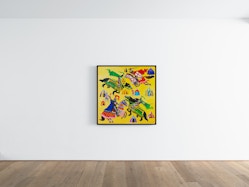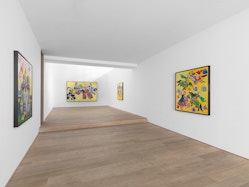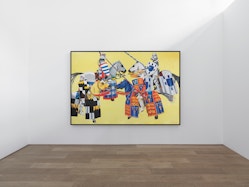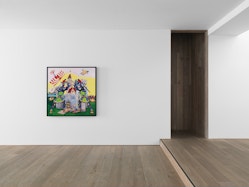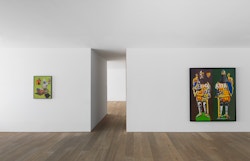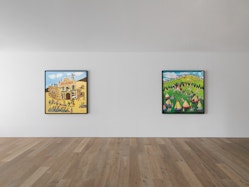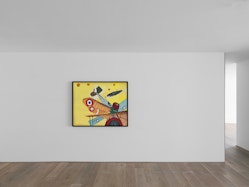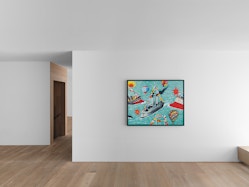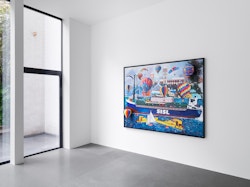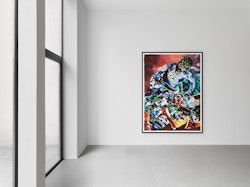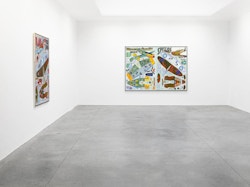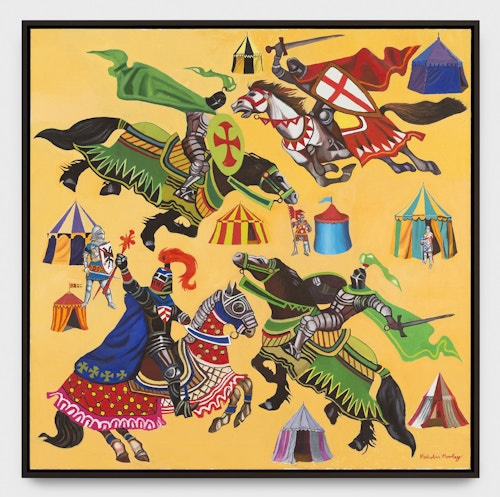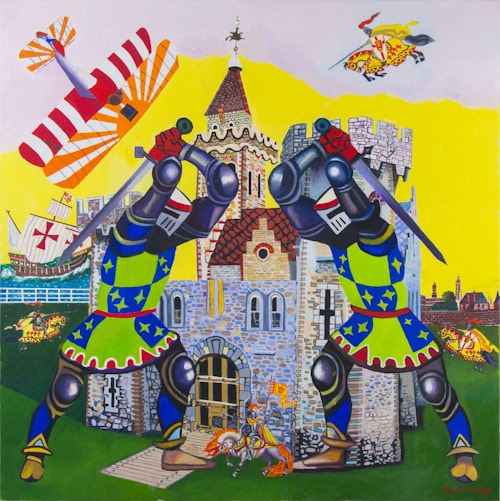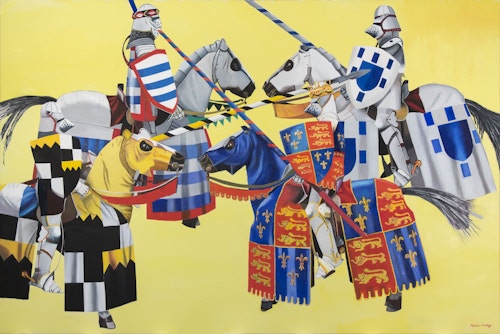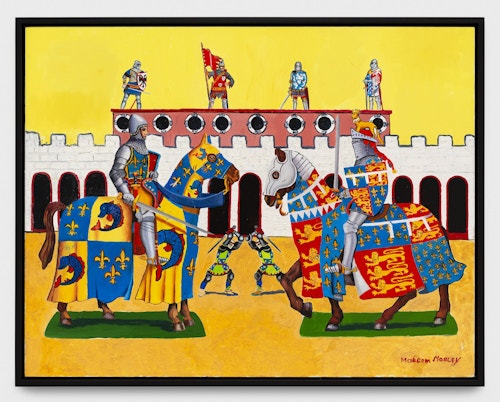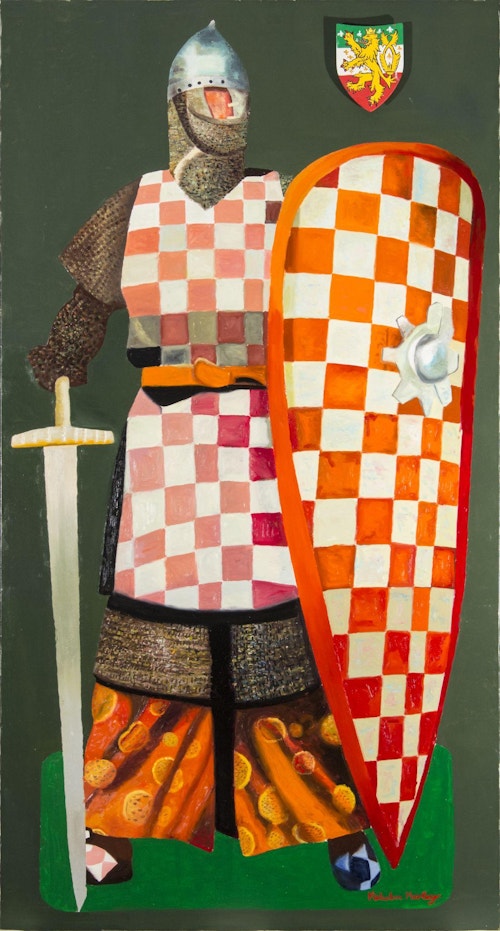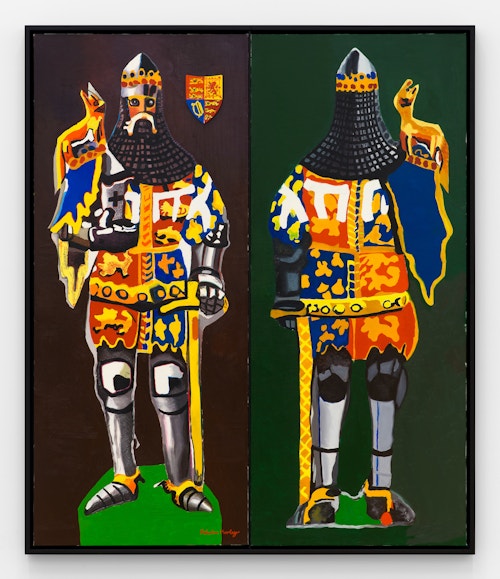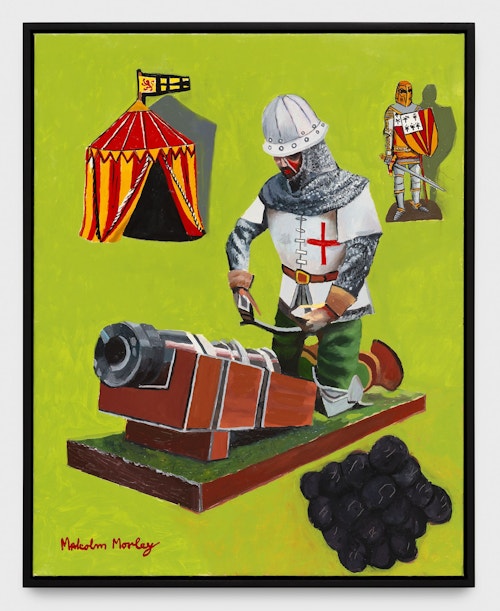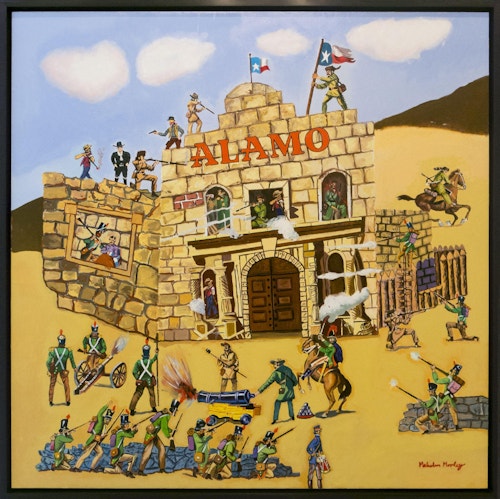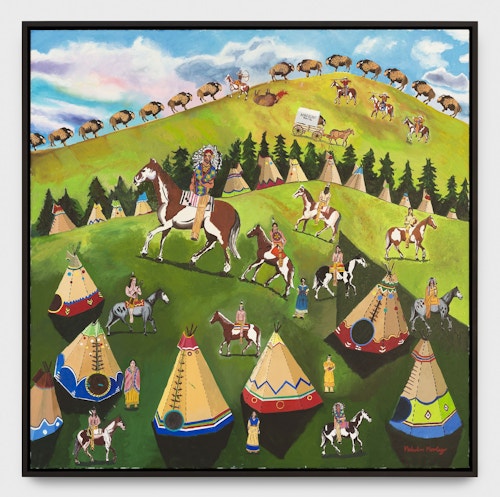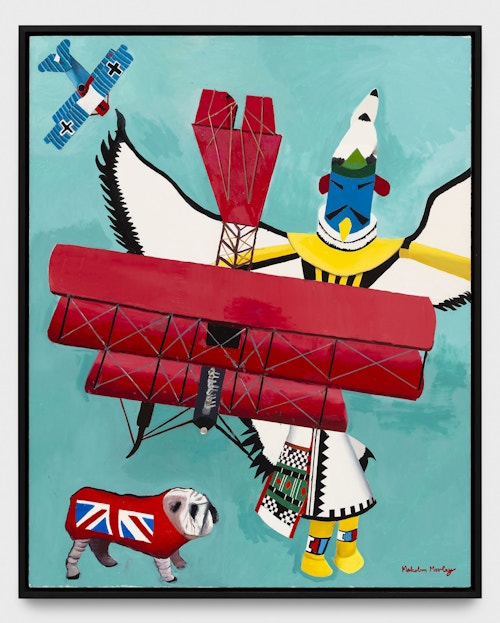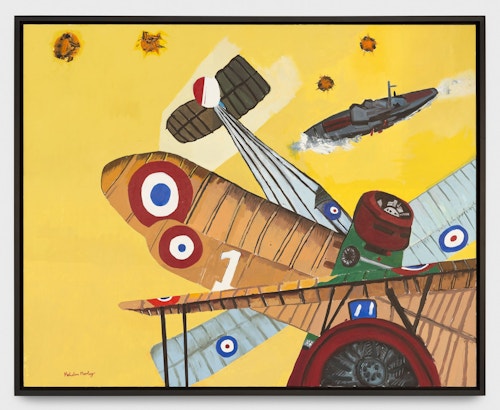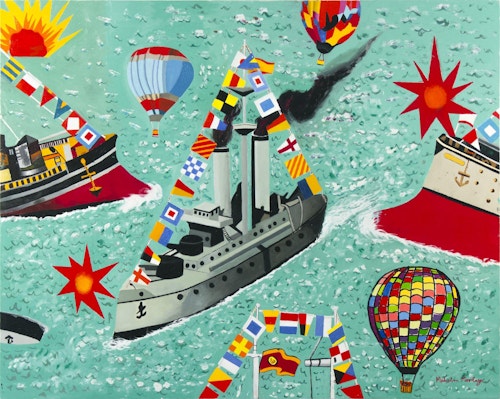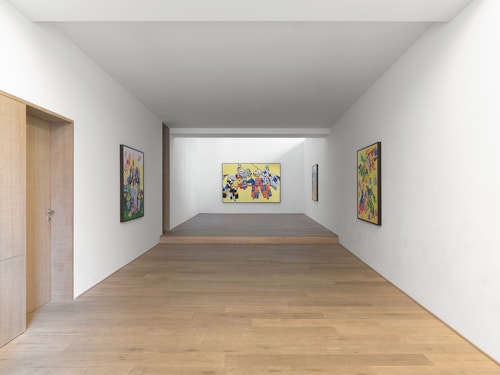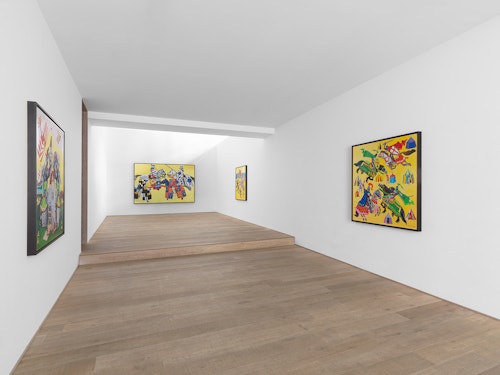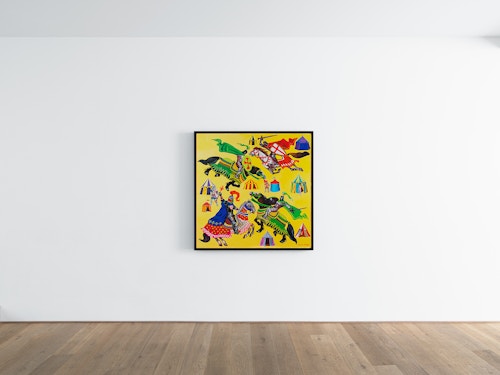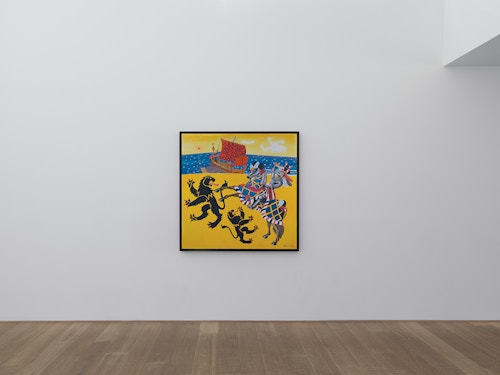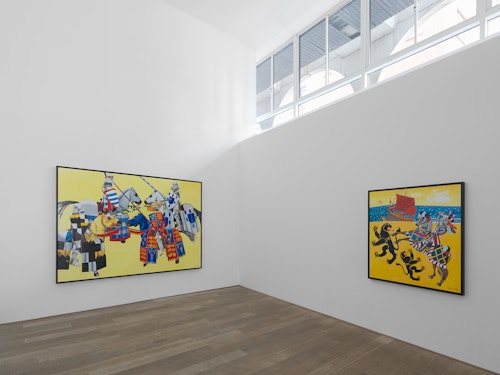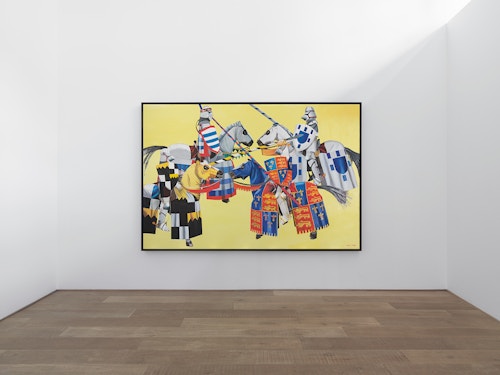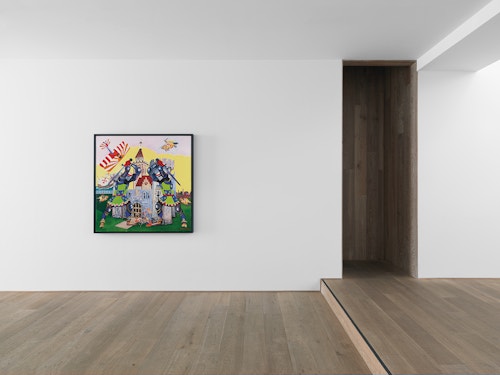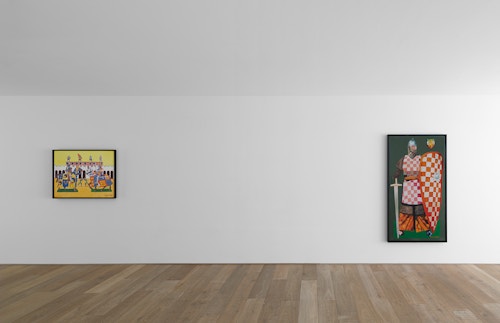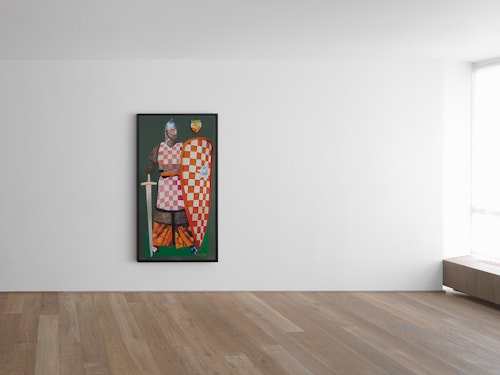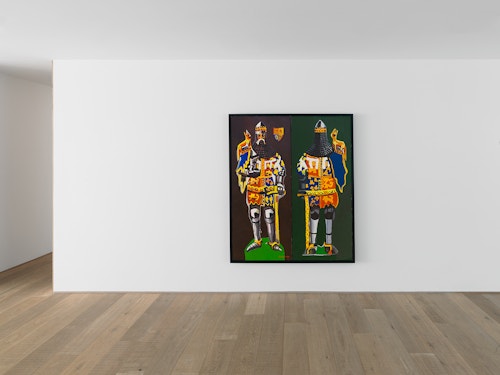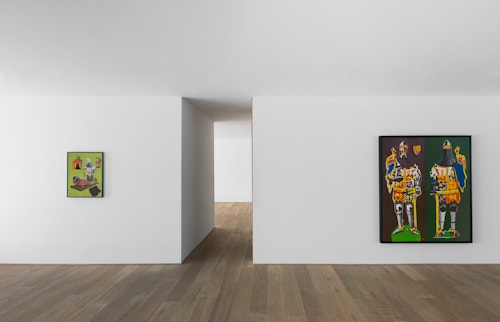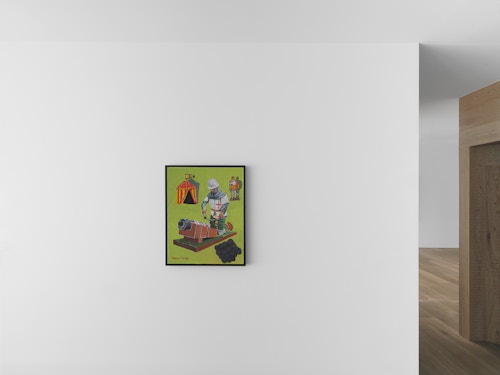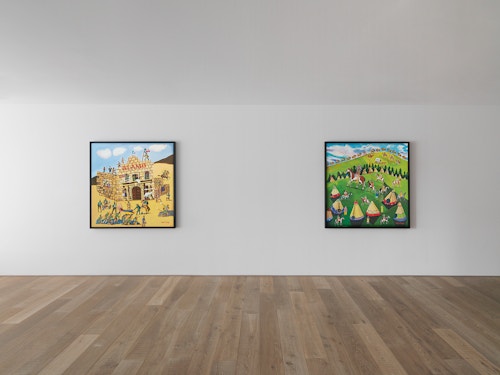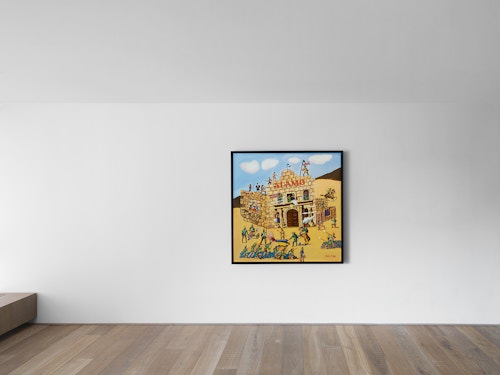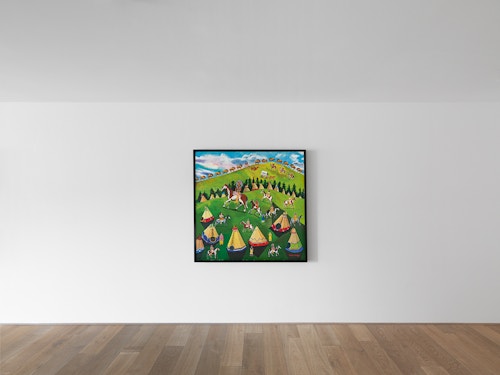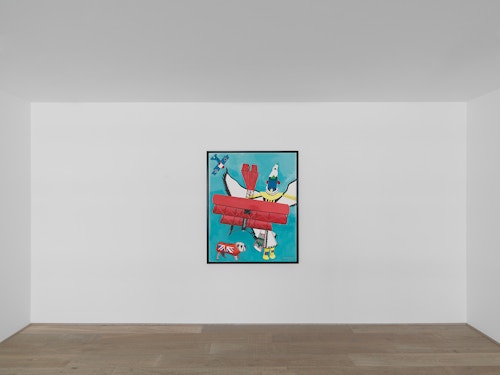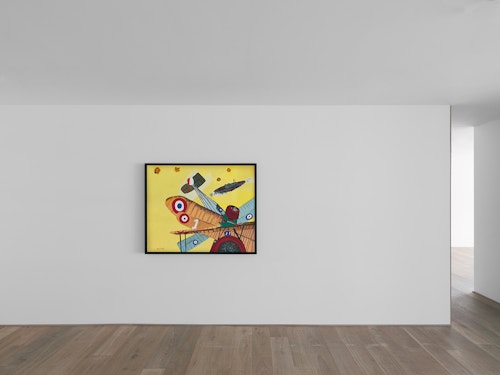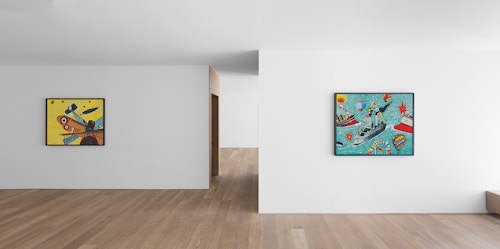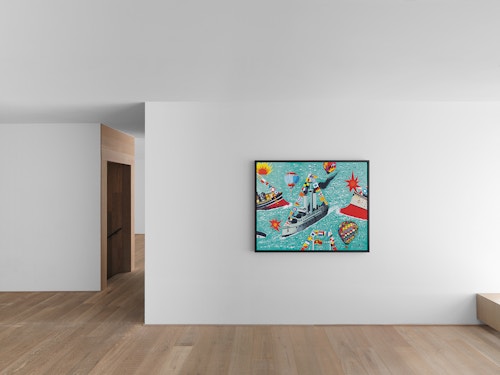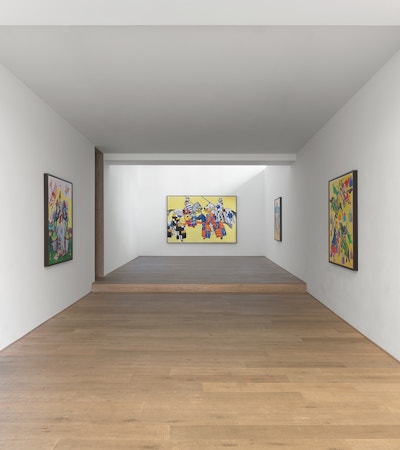
Malcolm Morley History Painting
Xavier Hufkens is delighted to announce the opening of an exhibition of new work by Malcolm Morley.
In this series of diverse but interrelated canvases, Malcolm Morley plunges the viewer into a colourful historical universe in which the traditional concepts of time and space no longer exist, and where past and present merge. In these large-scale and visually surprising compositions, the artist fuses a wealth of anachronistic elements into a unified whole, as in the World War I biplane and Spanish galleon that co-exist in Medieval Divided Self, or he evokes pivotal battles from vastly different epochs of British and American history, such as Agincourt and the Battle of the Alamo.
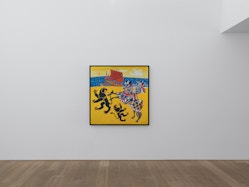
As indicated by the title of the exhibition, the theme of these paintings is history and, more specifically, war and conflict. Fighter planes and battleships, knights, cannons, American and Mexican soldiers, Greek warships and Tudor galleons, crenelated forts and Texan garrisons dominate the imagery, with the exception of a single canvas depicting an American pastoral idyll: Native American Buffalo Clan. History, however, can be both universal and personal. While Morley’s paintings invite the viewer to reflect upon the conflicts that have shaped humanity since time immemorial, they also echo the artist’s personal experiences as a child during the Second World War, his cultural affinity with both England and America, and his lifelong fascination with models, from the plastic Air-fix kits of his youth to the paper cut-out varieties.
Morley has been collecting models for over thirty years and these, together with Les Chants de Maldoror by the Comte de Lautréamont, are the primary sources of inspiration for his recent paintings. A passage in the 19th-century poetic novel, which was a favourite work of the Surrealists, describes ‘the chance meeting on a dissecting-table of a sewing-machine and an umbrella’. Fuelled by the idea of the relationship between these two incongruous objects, the artist began to rifle through his collection models and to explore the painterly possibilities of free association, with the canvas Maldoror I being a key example of this new-found approach. Furthermore, Morley simultaneously jettisoned his traditional practice of transferring images to the canvas using a grid. Yet for all of their inventiveness, the works are very much rooted in the observation of reality – in this case the models in the studio – and the relationship between hand and eye. As Morley explains: ‘they’re three-dimensional objects that I look at, and the emphasis is very much on the idea of looking at. I paint them from the way in which I’m looking at them, which is really from the point of view of sensations. I feel the sensation of it, and pre-imagine it made of paint… but it’s not just a question of looking, but of doing — in relation to this, in relation to that, in relation to the space between things. In a way, it’s very classical.’
And therein lies the paradox and the multiple readings that extend from the oeuvre: Morley’s canvases are rooted in tradition, in the painterly sense, but resolutely contemporary in terms of bravura and the splicing together of images. His paintings can also be viewed as the multi-layered products of a complex process of historical deconstruction and reconstruction that takes place on both a personal and overarching level. And finally, and most simply of all, they can be seen as the consummate works of an artist who has devoted sixty years to contemplating the world, and his life, through paint.
Malcolm Morley (b. 1931, London), who has lived in America since 1958, was the inaugural winner of the Turner Prize in 1984. Recent solo exhibitions include: Malcolm Morley at the Ashmolean: Paintings and Drawings from the Hall Collection, curated by Sir Norman Rosenthal, Ashmolean Museum of Art and Archaeology, University of Oxford, Oxford, UK (2013); Malcolm Morley: Painting, Paper, Process, Parrish Art Museum, Water Mill, New York, USA (2012) and Malcolm Morley in a nutshell: The Fine Art of Painting 1954-2012, Yale School of Art, 32 Edgewood Avenue Gallery, New Haven, CT, USA (2012).
